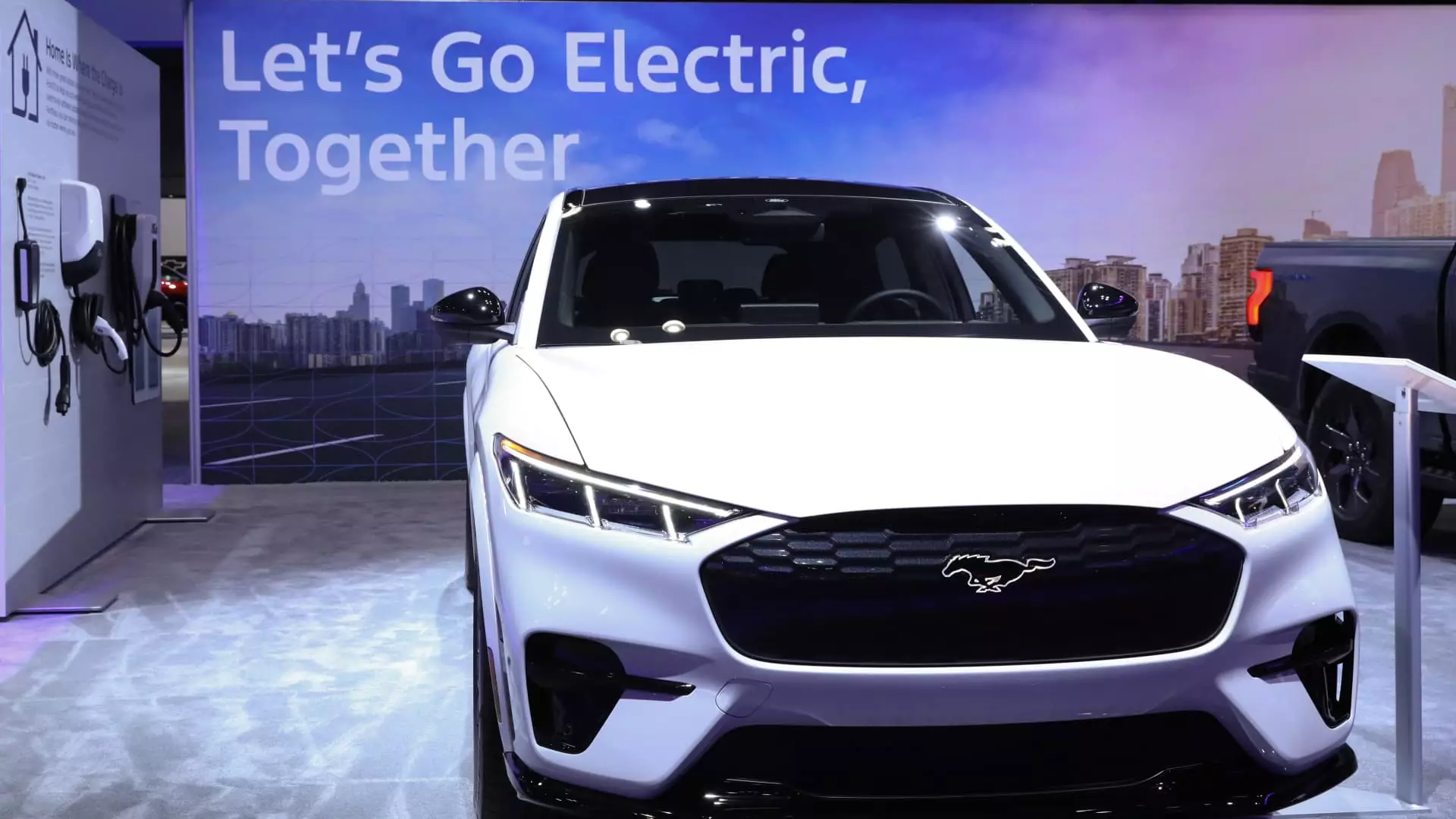Ford Motor’s U.S. new vehicle sales saw a significant increase of 11.2% in May compared to the same month last year. This growth was primarily driven by strong sales in the all-electric and hybrid vehicle segments. In particular, the sales of hybrid and all-electric vehicles surged by approximately 65%, outpacing the 5.6% rise in sales of traditional internal combustion engine vehicles. However, it is crucial to note that hybrid and EV sales accounted for only 14% of the total sales, with approximately 26,600 units sold out of more than 190,000 total vehicles.
The increase in EV sales poses a dilemma for investors as Ford aims to expand its EV offerings to comply with fuel economy standards and emissions regulations. Despite the growth in sales, the company’s electric vehicle unit, including the Model E, has faced significant losses. In April, Ford reported a staggering $1.32 billion loss on 10,000 vehicles sold in the first quarter, translating to a loss of $132,000 per vehicle. The financial challenges in the EV segment highlight the complexities of transitioning to electric mobility.
In May, Ford witnessed a nearly doubled sales volume of its all-electric F-150 Lightning pickups compared to the previous year. Additionally, sales of the Mustang Mach-E EV rose by 46% year over year, indicating growing consumer interest in electric offerings. The spike in hybrid sales reflects Ford’s strategy to focus on hybrid technology as part of its long-term plan. The company announced earlier this year that it would prioritize hybrid options in its North American lineup by 2030, delaying the production of new all-electric vehicles.
Ford’s total year-to-date U.S. sales through May reached 877,685 units, marking a 5.6% increase compared to the same period in 2023. The sales growth was primarily driven by a strong performance in the SUV segment, with approximately 10% increase in sales, as well as a 2.5% uptick in truck and van sales. The positive sales trend underscores the company’s efforts to adapt to evolving market demands and regulatory requirements.
Ford’s performance in the U.S. new vehicle market in May reflects a mix of opportunities and challenges. While the company has shown strong growth in hybrid and EV sales, the financial pressures in the electric vehicle segment raise concerns about sustainability. Moving forward, Ford will need to strike a balance between innovation and profitability to navigate the dynamic automotive landscape successfully.

